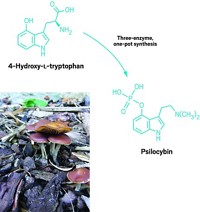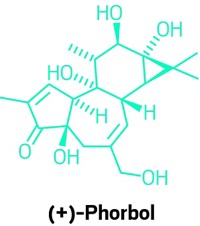Advertisement
Grab your lab coat. Let's get started
Welcome!
Welcome!
Create an account below to get 6 C&EN articles per month, receive newsletters and more - all free.
It seems this is your first time logging in online. Please enter the following information to continue.
As an ACS member you automatically get access to this site. All we need is few more details to create your reading experience.
Not you? Sign in with a different account.
Not you? Sign in with a different account.
ERROR 1
ERROR 1
ERROR 2
ERROR 2
ERROR 2
ERROR 2
ERROR 2
Password and Confirm password must match.
If you have an ACS member number, please enter it here so we can link this account to your membership. (optional)
ERROR 2
ACS values your privacy. By submitting your information, you are gaining access to C&EN and subscribing to our weekly newsletter. We use the information you provide to make your reading experience better, and we will never sell your data to third party members.
Biological Chemistry
Chemists Find More Efficient Total Synthesis Route To Ingenol
Method could boost production of Picato, a drug used to ward off skin cancer that is currently extracted inefficiently from plants
by Carmen Drahl
December 23, 2013
| A version of this story appeared in
Volume 91, Issue 51

COVER STORY
Organic Synthesis: Ingenol, Now In Fewer Steps
From 37 steps down to just 14. Chemists this year found a streamlined way to synthesize ingenol, a plant-derived member of a medicinally vital family of compounds—terpenes. A Danish pharmaceutical firm is applying the new synthesis to what may become a more efficient, scalable production of Picato (ingenol mebutate), which is FDA approved to treat actinic keratosis. This skin condition affects 250 million people worldwide and if left untreated can lead to skin cancer. Today’s supply of Picato comes from weedy plants known as spurges. Extracting ingenol is tedious, with nearly 800 kg of the plants needed to obtain 1 g of drug. Chemists have synthesized ingenol before, but the routes require 37 steps or more—not a blueprint for commercial production. To develop a more efficient synthesis, Michael Sierra of LEO Pharma, maker of Picato, teamed with Phil S. Baran’s group at Scripps Research Institute California. The Scripps researchers drew on their general approach to terpene synthesis to develop a two-phase route to ingenol (C&EN, Aug. 5, page 7; Science 2013, DOI: 10.1126/science.1241606). In the months since the synthesis was reported, LEO Pharma’s contract research partner in India has scaled up the synthesis of key ingenol intermediates to near-kilogram levels. Meanwhile, Baran was awarded one of this year’s MacArthur Fellowships, commonly known as “Genius Grants,” for his total-synthesis approach to making pharmacologically active natural products, including ingenol-like compounds (C&EN, Sept. 30, page 8). The Scripps-LEO academic-industrial partnership has grown to include the lab of Scripps’s Benjamin Cravatt. The expanded team is working to further understand how ingenol and related terpenes exert their beneficial effects.





Join the conversation
Contact the reporter
Submit a Letter to the Editor for publication
Engage with us on Twitter